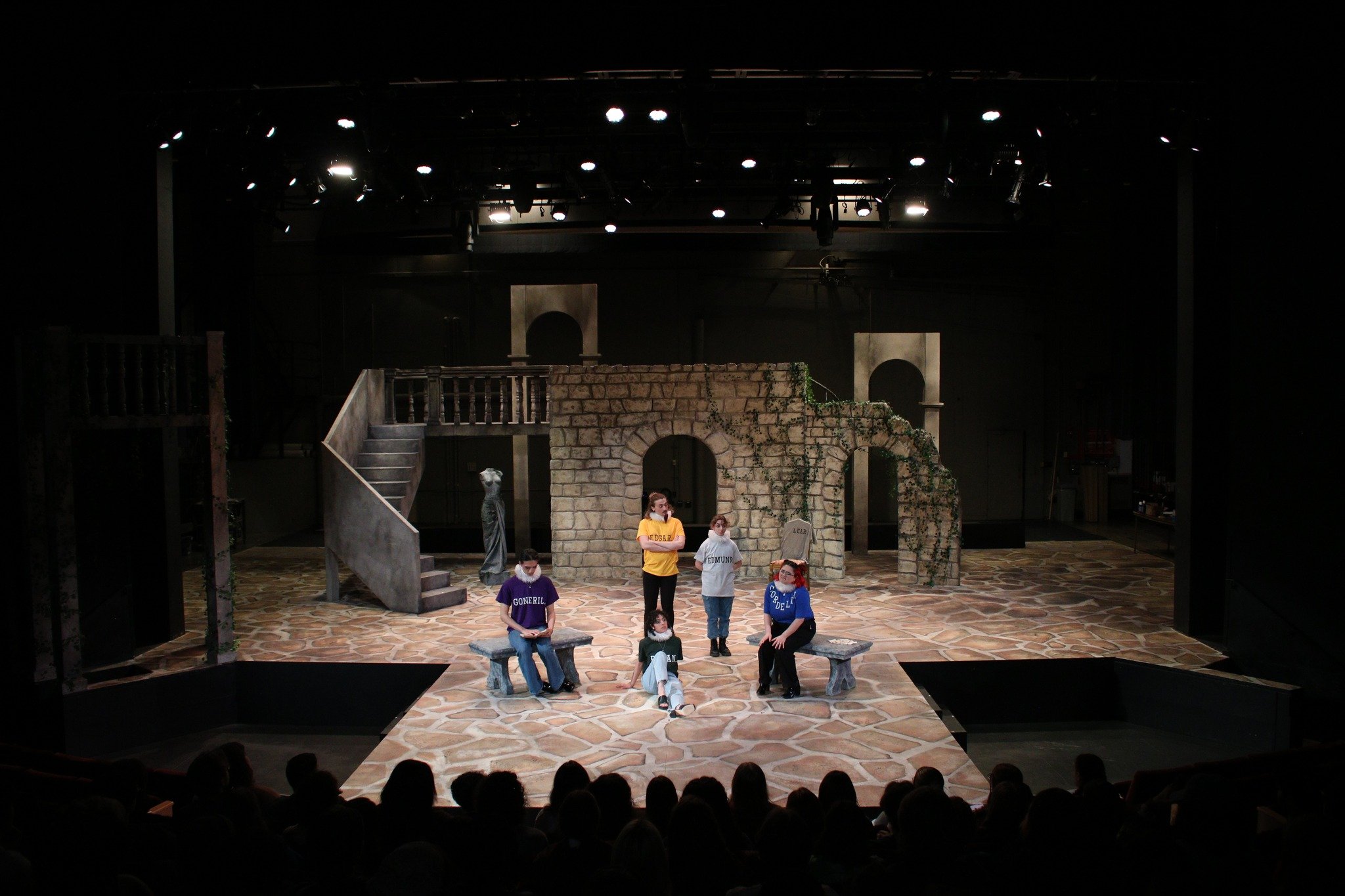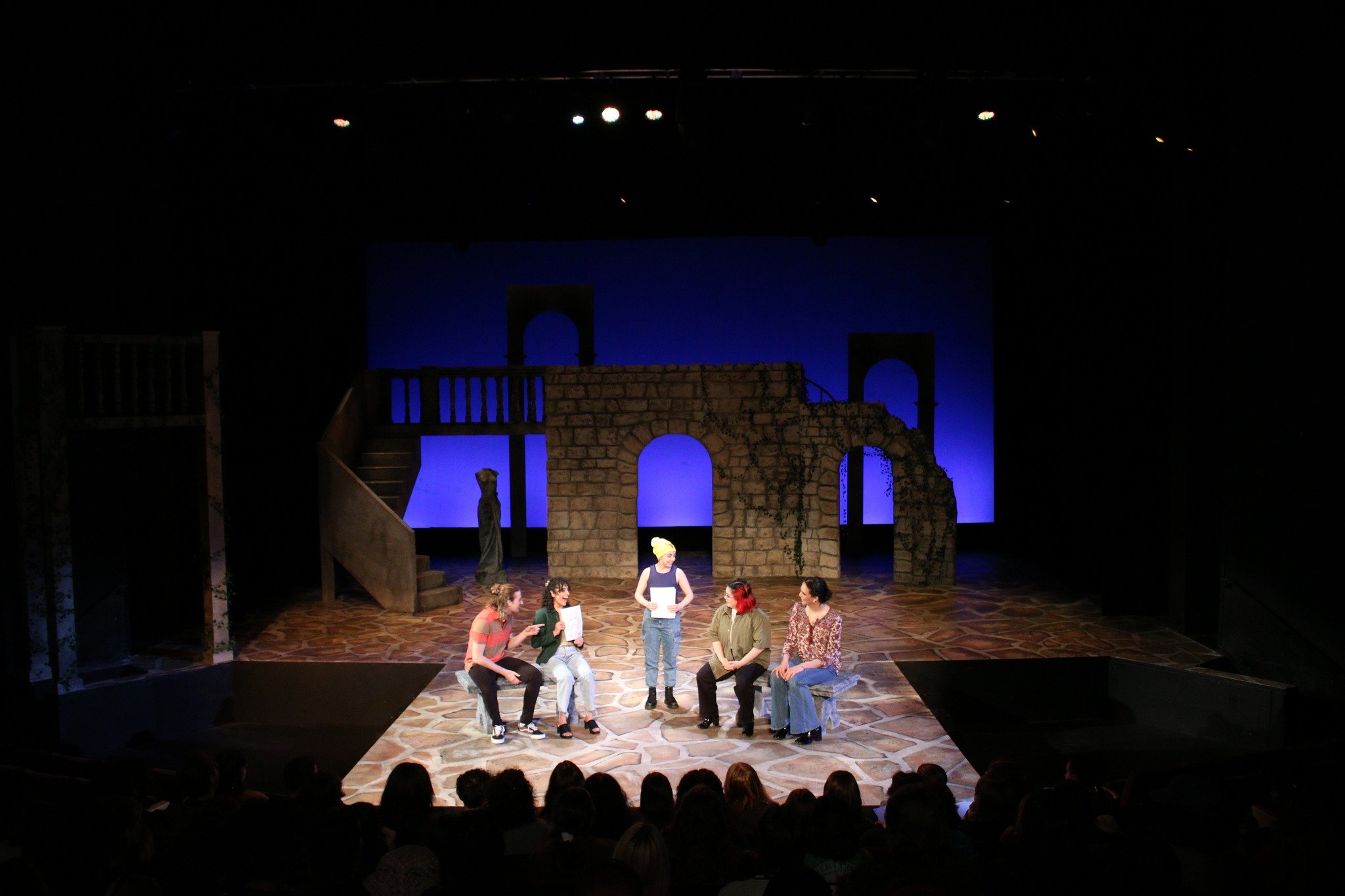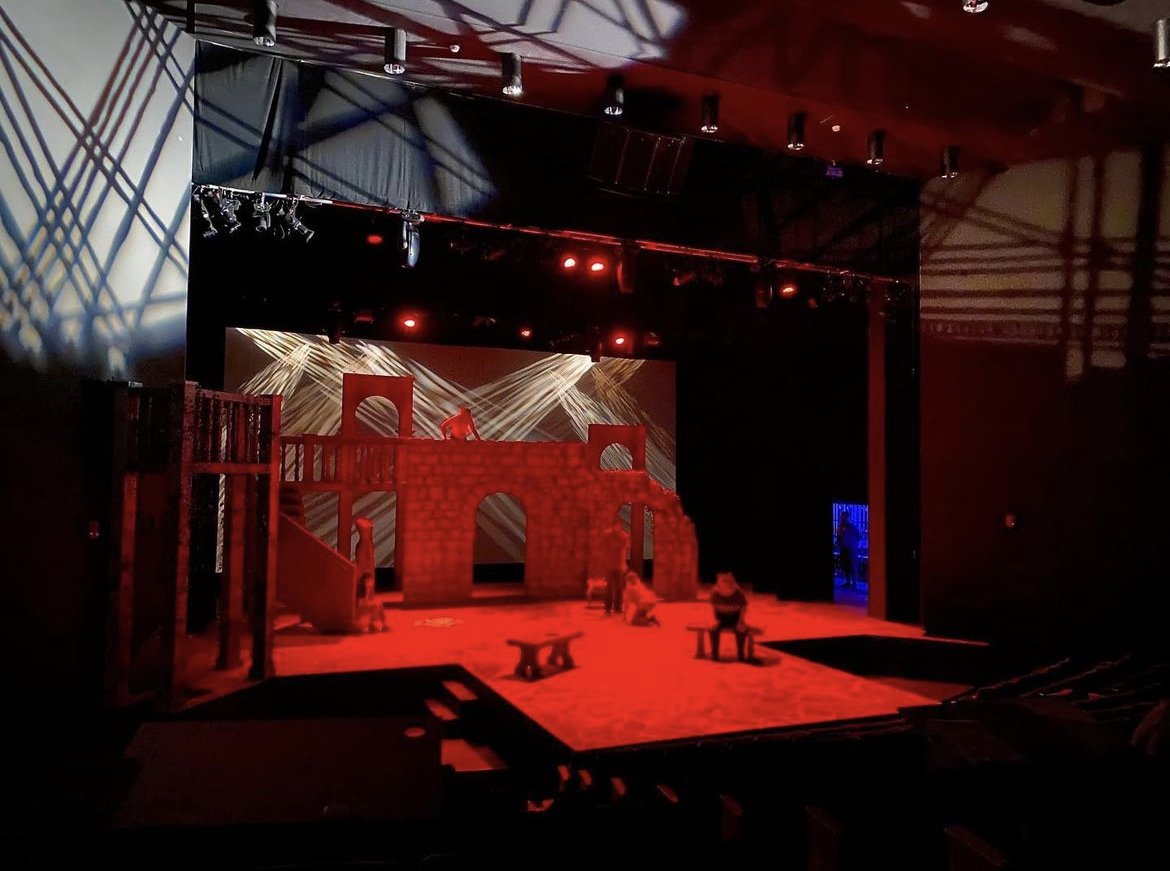
2023
Lear by Young Jean Lee
Described as “a collision” between Shakespeare’s King Lear, Sesame Street, and playwrite Young Jean Lee’s own take on the dealing with a father’s mortality, LEAR focuses not on the aging Lear and Gloucester, but rather on their adult children who turned their backs on their fathers’ suffering in this absurdist tragedy.
SUNY Fredonia | Fredonia, NY









Director’s Note:
“I have full cause of weeping, but this heart
Shall break into a hundred thousand flaws,
Or ere I’ll weep. O Fool, I shall go mad” King Lear, Act 3, Scene 2
Young Jean Lee’s Lear is an absurdist take on the themes and ideas contained in Shakespeare’s King Lear. The theatrical experience of Lear is not based in plot, but is a poetic deconstruction and reimagining of the themes, ideas, and use of language in King Lear. In the spirit of Lee’s work, the piece you see tonight has been deliberately “de-constucted” to illustrate the artifice of theater to ask our audiences to deconstruct their thoughts on plays, grief, character, and heartbreak.
Many of Shakespeare’s plays written before the dawn of the Jacobean era (when James I ascended the throne, after the death of Elizabeth) question the transference of royal power. It is thought that Shakespere’s King Lear was probably written in 1605 or 1606, after James I had ascended to the throne. The play starts with Lear dividing his kingdom into three sections “that future strife/ May be prevented now.” (Lear, Act 1, Scene 1) But, this transference of wealth and power is first tested by Lear, who challenges his adult daughters to state who loves Lear most. The youngest, Cordelia, refuses and is married to the King of France with no dowery, and Lear is rejected by his older daughters and turned out wander the woods with a fool, a blind man (who was blinded by Regan’s husband), and a raving mad man (Edgar, the blind man’s son in the disguise of Poor Tom). This is a play about the transference of power, but also grief, rage, familial bonds, heartbreak, and violence.
Young Jean Lee was writing a dissertation on King Lear when she decided to become a playwright. Lee’s experimental, absurdist, and avant-guard work was originally produced by her own self-named company… a company that sold tee-shirts that said “Destroy the Audience.” Lee ultimately does not seek to destroy us, but rather “get in the way of the audience’s self-complacency, or to put a little piece of gravel into their brains that irritates them.” Her work did resonate with audiences, and with her play, Straight White Men, Lee became the first Asian American woman to have a play produced on Broadway.
By creating the poetic experience of Lear, Lee uses the kind of language that Shakespeare uses: vicious and misogynistic language, absurdist non-sensical language, and language of deep empathy designed to break our hearts and teach us about loss, death, and deconstruction of family. She dispenses with Shakespeare’s iambic pentameter and uses a scene from Sesame Street to give us the feeling that we might have when we watch King Lear. The final monologue might also be a peek into Lee’s own grieving process, as she was losing her father while working on this piece. It is a call for empathy for all involved the process of loss: the afflicted, the aggrieved, and the survivors.
Young Jean Lee’s Lear invites us to court the “madness” of King Lear to “break our hearts into a hundred thousand flaws” so that we may weep.